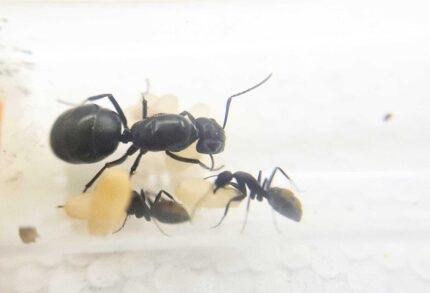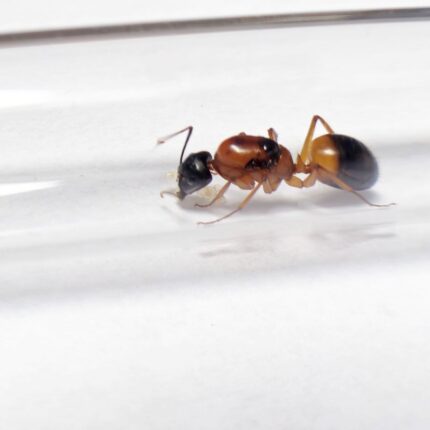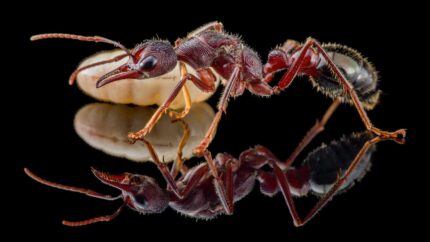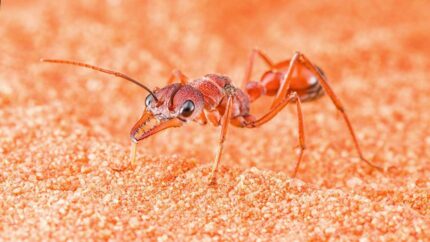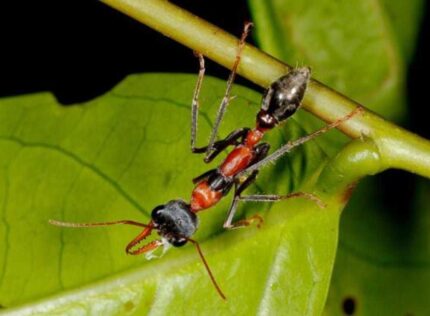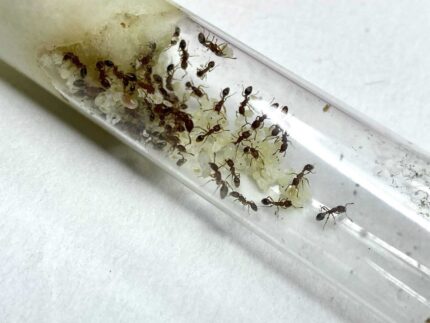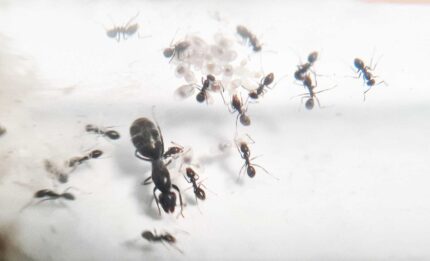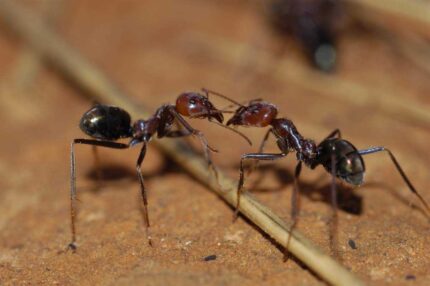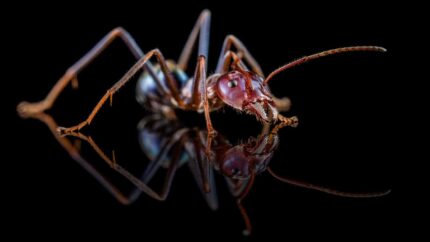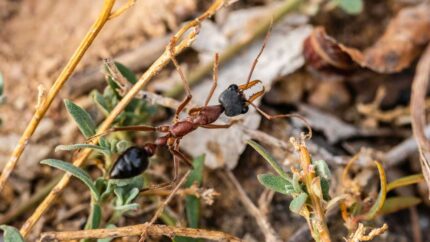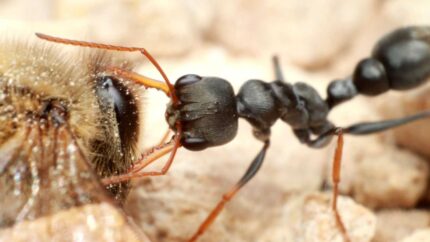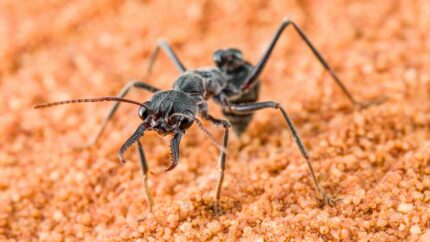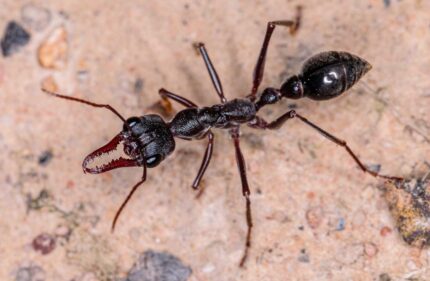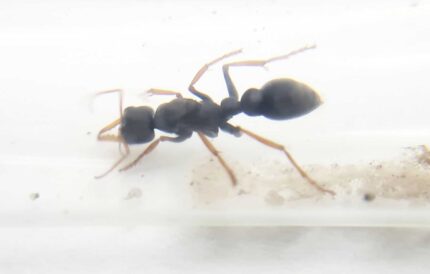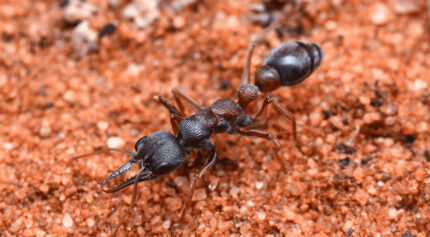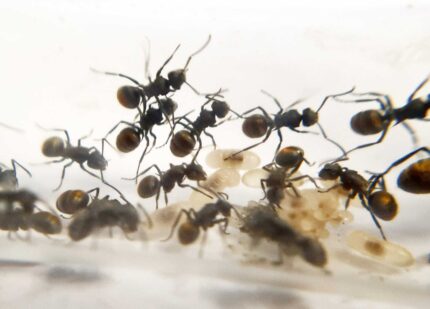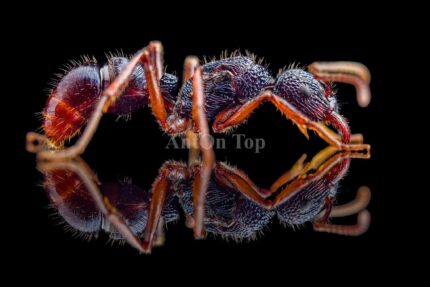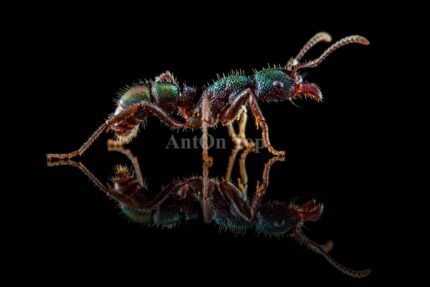Camponotus aeneopilosus
399,90 zł – 709,90 złCamponotus aeneopilosus is a monogynous ant species with colonies of up to 5000 workers. They develop quickly and have a size range of 14-16mm for queens, 6-9mm for workers, and 8-12mm for major workers. These black ants require a diet of food insects, syrup, fruits, vegetables, jelly, and cooked chicken without salt.
Camponotus consobrinus
559,90 zł – 669,90 złCamponotus consobrinus is a monogynous ant species with colonies reaching up to 20,000 workers. They exhibit a moderate to fast development speed. Queens typically measure around 16–18 mm in length, while workers range from 6 to 12 mm, showing noticeable polymorphism. This species is known for its striking appearance: the head and thorax are orange to reddish-brown, while the gaster is glossy black, creating a sharp bicolored contrast. They primarily feed on insect prey, sugary substances like honey-water or syrup, jelly, fruit, and protein-rich foods such as cooked chicken or egg.
Iridomyrmex bicknelli
399,90 zł – 549,90 złIridomyrmex bicknelli is a monogynous ant species with medium development rate and a colony size of up to 50,000 workers. The queen is 6-7 mm in size while the workers are 3-4 mm and the ants are black in color. They are fed with a variety of food including insects, syrup, fruits, vegetables, jelly, and cooked chicken without salt.
Polyrhachis vermiculosa
595,90 złThe Polyrhachis vermiculosa ant colony is of polygyny type, with a size of up to 5000 workers. They have a fast development speed and come in different sizes – the queen measuring 10 mm and the workers measuring 5-7 mm. They are black and gray in color with golden hairs on the abdomen. Their nutrition includes insect food, syrup, fruits, vegetables, jelly, and cooked chicken without language.
Rhytidoponera chalybeae
689,90 złRhytidoponera chalybeae is a monogynous ant species. The colony size can reach up to 500 workers, and their development rate is medium. The queen measures 7-8mm, while the workers measure 4-7mm. The ants have an iridescent purple orange-red color, with dark purple being dominant. Their nutrition consists of food insects, syrup, fruit, vegetables, jelly, and coconut water.


